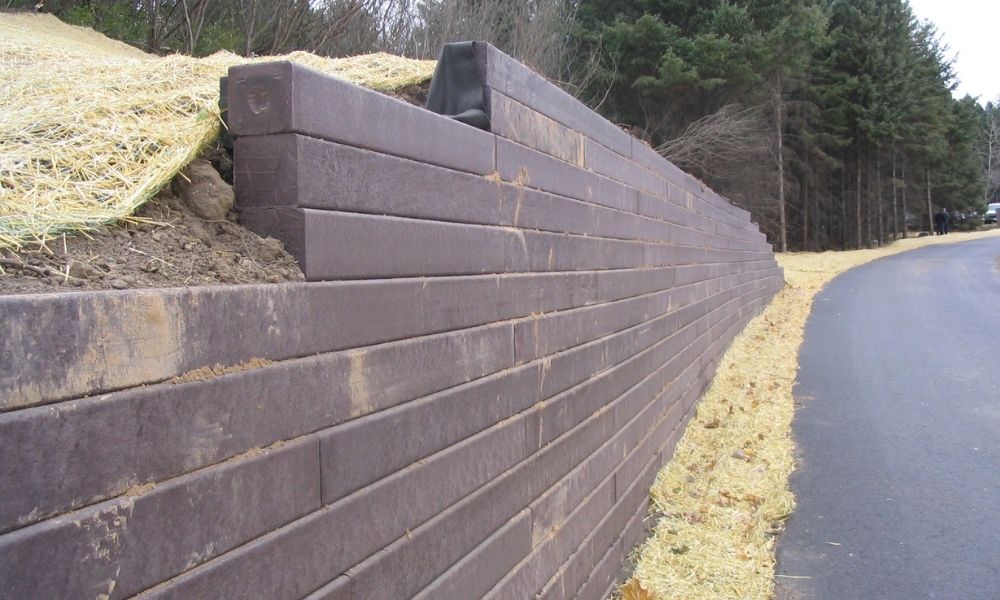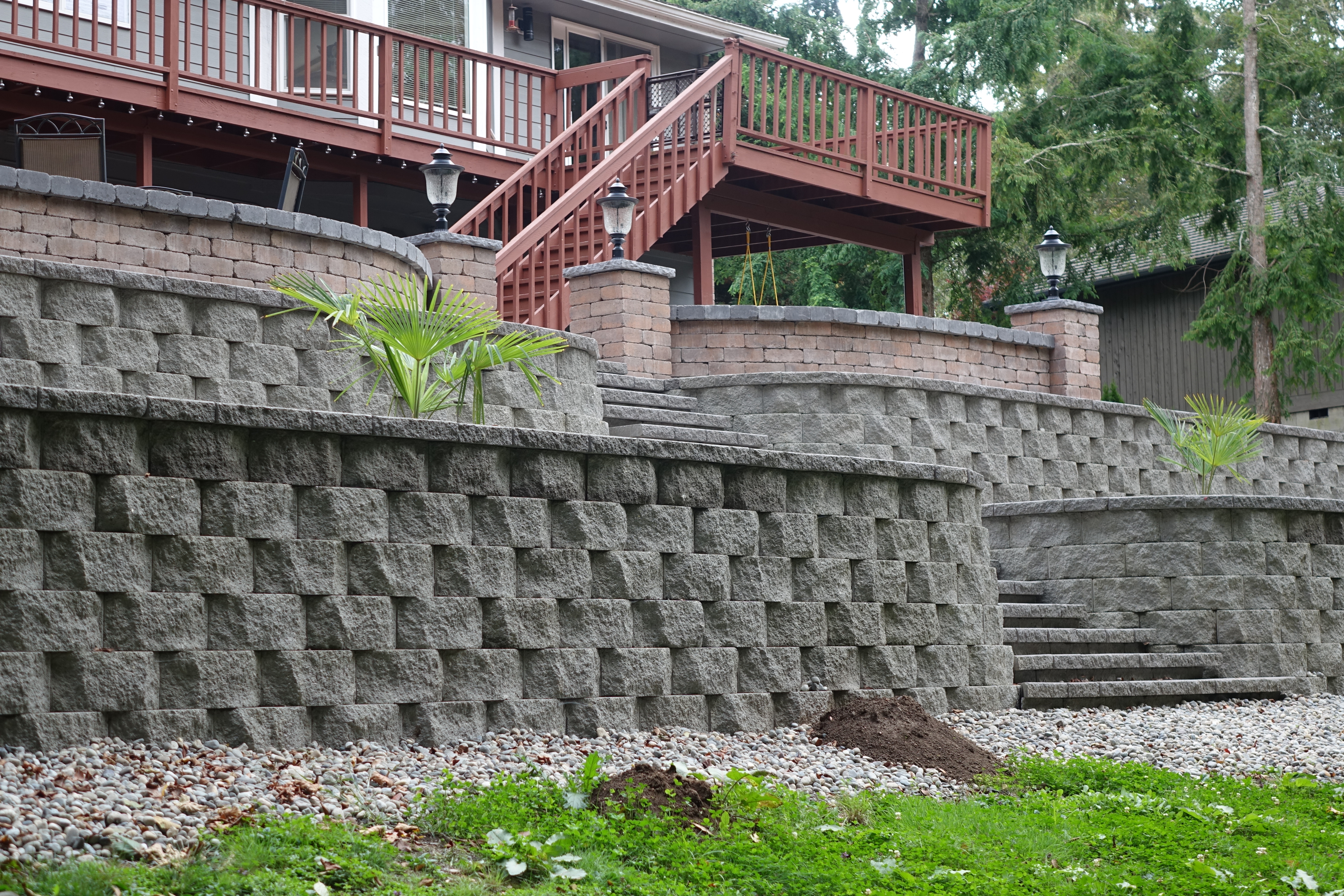Secret Factors To Consider for Structure Efficient Retaining Walls in Your Yard
When you're thinking about building a preserving wall surface in your backyard, it's vital to think of a number of vital elements. The wall surface's objective, the products you'll utilize, and the details dirt conditions can all affect its effectiveness and durability. You'll likewise need to browse local building regulations and prepare for correct drain. Just how do you ensure your layout not just fulfills these needs yet likewise improves your landscape? Allow's explore the essential steps with each other.
Comprehending the Purpose of Your Retaining Wall
When you believe regarding developing a preserving wall, consider its major function: supporting dirt and avoiding disintegration. Retaining walls give essential support for sloped landscapes, assisting to maintain dirt honesty. You'll discover they're essential in areas where water drainage could or else remove soil, causing costly repair work and landscape damages.
By holding back planet, these walls create level surface areas for gardens, patios, or pathways. This not just enhances your backyard's visual appeals however likewise promotes far better drain, lowering water merging in unwanted areas. If you're managing high slopes, a well-constructed retaining wall can prevent landslides, guaranteeing security for you and your home.
Ultimately, recognizing the objective of your retaining wall surface will certainly assist your style decisions and help you develop a useful, long lasting structure that satisfies your needs. Take a moment to examine your landscape; it'll pay off in the lengthy run.
Choosing the Right Materials
When choosing products for your retaining wall, you'll wish to consider durability, visual appeals, and expense. Each variable plays a necessary function in ensuring your wall stands the examination of time while looking wonderful and fitting your budget plan. Allow's discover exactly how to make the very best selections for your job.
Product Durability Factors
Choosing the right materials is vital for the long life and performance of your retaining wall, given that their longevity straight influences the wall's ability to hold up against environmental anxieties. Start by considering your neighborhood climate; products like concrete and stone withstand moisture and temperature variations well. If you reside in a location susceptible to hefty rains, go with materials with great drain homes, like crushed rock or porous blocks, to protect against water buildup.
Some products carry out better in certain dirt kinds, so it's crucial to match them accordingly. Picking sturdy materials guarantees your retaining wall surface stands strong, protecting your backyard for years to come.
Visual Design Selections
Long lasting materials not only guarantee your retaining wall's architectural stability however likewise play a crucial role in its aesthetic allure. Don't forget concerning the wall's form-- rounded walls can produce a softer look, while straight lines can really feel much more organized. By meticulously choosing products that align with your visual vision, you'll improve your outdoor area while ensuring your wall surface stands strong versus the components.
Cost-Effectiveness Analysis
Choosing the best materials for your retaining wall isn't simply about aesthetics; it's likewise vital for your spending plan. When choosing materials, think about both ahead of time prices and long-term sturdiness.
Do not forget to element in maintenance expenses too (OKC Precision Retaining Walls). Some materials, like natural stone, can add charm and need much less upkeep, while others may require normal therapies
Inevitably, evaluate the benefits and drawbacks of each alternative versus your spending plan and the wall surface's desired objective. Spending intelligently in products currently can protect against pricey concerns later on. Pick products that stabilize expense and performance efficiently.
Evaluating Soil Conditions and Drainage
As you start your job, assessing soil problems and drain is important for the success of your retaining wall surface. Sandy soil drains pipes well however lacks security, while clay soil can preserve wetness, leading to pressure on your wall surface.
Following, evaluate the incline of your lawn. If water naturally moves toward your wall surface, you'll need to execute a drainage remedy to stop erosion and stress buildup. Think about installing perforated pipes or gravel backfill behind the wall surface to assist in drainage.
Last but not least, observe any neighboring trees or vegetation; their roots can influence soil security. By understanding your dirt conditions and carrying out proper drainage, you'll produce a strong foundation for your retaining wall surface that stands the examination of time.
Abiding By Local Structure Codes
Before news you start developing your retaining wall surface, you require to research local guidelines to assure compliance. It's important to understand what allows you must get, as this can save you from expensive penalties or needing to redo your work. Taking these steps seriously will aid you build a risk-free and efficient framework.
Study Local Regulations
Understanding neighborhood policies is essential when intending your retaining wall task, particularly given that building codes can differ substantially by place. Look for standards on wall elevation, materials, drain systems, and structural integrity. By doing your research study upfront, you can guarantee your retaining wall surface fulfills all required codes and blends seamlessly into your backyard.
Acquire Required Authorizations
Once you have actually researched regional laws, the next action is to acquire the essential permits for your retaining wall surface project. This process assurances your wall surface follows building codes and security criteria. Reach out to your neighborhood building authority to locate out what allows you need. They might require certain strategies or engineering evaluations, particularly for bigger walls. Be prepared to submit in-depth illustrations, including dimensions and materials. Don't fail to remember to examine if your project impacts drain or bordering buildings, as these factors might call for added permits. Securing the best approvals can conserve you from expensive penalties or having to dismantle your wall later on. Keep in mind, adhering to the regulations currently will certainly bring about a smoother construction experience.

Planning the Layout and Looks
As you start intending the style and aesthetic appeals of your retaining wall, consider just how it will harmonize with the bordering landscape. Think about the products you'll utilize-- stone, block, my sources or concrete-- and how they'll complement your home's style and the natural environments in your lawn. Select colors and appearances that blend seamlessly with existing attributes like outdoor patios, pathways, or gardens.
Following, imagine the wall's form and height. Bent walls can soften a stiff landscape, while straight lines might communicate a much more contemporary appearance. Do not fail to remember to incorporate plants and plant around the wall surface for an all-natural touch; this can boost its appeal and incorporate it into the atmosphere.
Lastly, keep in mind functionality. Your style needs to not only be aesthetically pleasing but likewise serve its function effectively. By thoughtfully intending these components, you'll produce a retaining wall that enhances your backyard's charm while meeting its structural function.
Computing Height and Density Needs
To build a strong retaining wall surface, you need to precisely compute its elevation and density requirements based on the dirt problems and the elevation of the slope it will support. Beginning by examining the incline's angle and the sort of soil, as different soils apply differing quantities of stress.
For walls over 4 feet high, consider a thickness of a minimum of 12 inches. If the wall surface is taller, raise the thickness proportionally to maintain stability.
Following, calculate the height of the wall by determining the vertical range it requires to maintain. For every single foot of elevation, you should commonly prepare for a thickness of one-third of the wall's height.
Always remember to account for added elements like water drainage and backfill, which can affect your wall's design. Appropriate computations currently ensure your retaining wall surface stands strong and lasts for many years to find.
Maintenance and Durability Factors To Consider
While preserving your retaining wall might appear like a low priority, neglecting it can lead to significant problems gradually. Routine examinations are essential; look for splits, protrudes, or any type of signs of water damages. Attending to these issues early can save you from pricey fixings down the roadway.
Keep an eye on drainage systems, also. Obstructed drains pipes can create water to accumulate, exerting stress on your wall surface and compromising its security. Clear particles and guarantee proper flow to keep durability.
You may additionally want to assess securing your wall to safeguard it from moisture and weathering. Relying on the material, this might need reapplication every few years.
Last but not least, landscaping around your wall surface can support its stability. Avoid growing large trees close by, as their roots can threaten the foundation. With aggressive maintenance, your retaining wall surface can offer you well for several years to find.

Frequently Asked Concerns
Can I Construct a Retaining Wall by Myself, or Should I Employ an Expert?
You can definitely develop a preserving wall on your own if you have the right devices and knowledge. Working with a professional assurances it's done properly, especially for bigger or even more intricate structures. Consider your skill level before determining.
What Are one of the most Common Mistakes Made When Structure Retaining Walls?
When developing retaining walls, you might ignore correct drainage, skip using the best products, or neglect reinforcement. These common errors can cause architectural failing, so take your time and strategy meticulously to stay clear of concerns.
How Do I Know if My Retaining Wall Needs Reinforcement?
You'll know your retaining wall needs reinforcement if you notice cracks, leaning, or protruding. Inspect for water merging behind it or dirt disintegration near the base. Address these indicators promptly to prevent further damage.
What Plant kingdom Are Suitable for Landscaping Around a Retaining Wall?
When landscaping around a keeping wall, consider using low-maintenance plants like succulents, ornamental grasses, or slipping ground covers - OKC Precision Retaining Walls. They'll grow in click for more those problems and add beauty while preventing dirt disintegration around your wall
How Can I Prevent Disintegration Around My Retaining Wall?
To avoid disintegration around your retaining wall, you can grow ground cover, usage mulch, and install water drainage systems. Frequently look for water buildup and readjust landscaping to redirect overflow away from the wall surface.